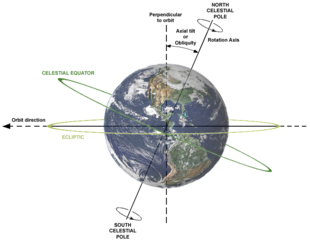
In the photo astrology struggle for her life under the attack of skepticism
Introduction
The astrologers got used to the idea that their discipline is met with skepticism by many. It has always been so and now they get on with this.
But it is harder to stand the fact of receiving criticism that is only nonsense bereft of any value, born from ignorance and sheer arrogance toward a subject reputed irrational and superstitious.
A good example is the controversy about the precession of the equinoxes that we astrologer are accused of neglecting.
So it happens that are published low quality articles like this: http://spaceplace.nasa.gov/starfinder2/en/ where, not happy enough of accusing the astrologers of not considering the precession, they affirm that the constellation of Ophiuchus should be a 13th zodiacal sign.
After all we can understand the existence of the controversy about the precession, since now we can find even astrologers with confused ideas on the matter. Indeed, unfortunately, the most diffused astrology books usually do not deal with the matter since they begin immediately with the “interesting” part talking about the influence of the planets etc since the dirty work is left to the softwares (also I could fully understand the matter only after two or three years of study on astrology).
Much more annoying is the fact that, although they do not believe in astrology, they think of being able of telling us how our discipline works, affirming that we have forgot a sign that it has been left out by the Babylonians in order to have 12 signs like the 12 months.
In truth it is nothing else than a big misunderstanding, but let us proceed with order.
Technical premise
The motion of the Earth along her orbit give us the impression that the Sun is moving during the year, changing its latitude in respect to the equator, reaching a maximum of 23° north and 23° south, so changing the inclination with which the sunrays reach the Earth, so causing the climatic changes of the seasons. This path of the Sun is called ecliptic. It is so called because, obviously, here that the eclipses can happen if the movement of the Moon intersects the ecliptic in conjunction with the Sun (solar eclipse) or in its opposition (lunar eclipse, since this time the Earth is between the Sun and the Moon, so blocking the sunrays).

The difference among the equator and the ecliptic (1)
Why the ecliptic is related with the precession? It is related because the zodiac is nothing else than a zone comprised between 8-10° of north latitude from the ecliptic and the same degrees in south latitude (this because in this zone are comprised the orbits of all the planets of the solar system, except Pluto, that has been recently declassed to “dwarf planet” by the astronomers).
This zone is divided in 12 equal parts of 30 longitudinal degrees each that constitute the zodiacal signs.
The precession (finally)
And with this begin the real matter: Aries, the first zodiacal sign, begins in the point where the ecliptic intersects the equator and begin going north. When the Sun pass from this point we have the spring equinox in the northern hemisphere (this is why traditionally, Aries is the exaltation of the Sun, that mean that Aries is a place where the Sun can express himself well: finally the days are longer than nights and the temperature is rising, naturally this is true for the northern hemisphere where western astrology was born, the seasons are inverted below the equator); when the Sun intersects the equator in the opposite side, going south, we have the autumn equinox and the beginning of Libra (not surprisingly the fall of the Sun).
The solstices instead coincide with the signs Cancer, with the Sun at its maximum north latitude, and Capricorn, with the Sun at its maximum south latitude (for this reason the tropics are called “tropic of Cancer” and “tropic of Capricorn”, in fact their limit is just about 23° of north or south latitude, the maximum latitudes reached by the ecliptic).
The matter is just about the point in which the ecliptic intersects the equator rising north, called “gamma point” (or, more poetically, “point of Aries” by the astrologers) that represents the main point taken in account in the construction of the zodiac.
As a matter of fact, by the complex dynamics of the Earth orbit, we have the “precession of the equinoxes”, that is the earth’s axis turns very slowly, bringing with him the point of Aries that, in 25872 years (25700 according to other sources), makes a complete turn of the cosmos.
The skeptics' errors
This has generated big misunderstandings: since the zodiacal signs have the same names of some of the main constellations, many thinks that the zodiac is composed by the constellations themselves and that the sign of the moment is known by drawing an imaginary line that, starting from the Earth, passes through the Sun and then arrives to the constellation that is behind it at the given moment. Therefore, for the precession, when the Sun is in Aries according to the zodiac, in fact is pointing toward the constellation of Pisces (while, according to this logic, Aries at the moment should begin at about 24° of the zodiacal Aries).
Now, if the zodiac is composed by 12 signs of an equal size of 30° each, it is already apparent with a minimum of common sense that the signs can hardly coincide with the constellations, since in nature a similar regularity doesn’t exists.
If this isn’t enough the constellations also overlaps each other: for example Vivian Robson affirms that in 1920, when he wrote his study on the fixed stars and their use in astrology (2), the constellation of Leo occupied a zone from 12° Leo to 22° Virgo (so it has 40 degrees, not 30); Cancer, instead, went from 22° Cancer to 17° Leo (so only 25 degrees, and of these five overlaps with the constellation of Leo)
But this is nothing comparing to what would happen taking in account also Ophiuchus as our detractors would like: Ophiuchus would have 30 degrees occupying in 1920 an area from 27° Scorpio to 27° Sagittarius, but the skeptics should explain what then we should do of poor Scorpio that, always according to Robson, occupied the area from 23° Scorpio to 26° Sagittarius… (the NASA, applying criterias unknown to me, affirms that the Sun is aligned to Ophiuchus 18 days a year that would correspond to about 18°).
So, even if we were willing to use a constellation based astrology, there is simply no space for Ophiuchus. So it seems at least imprecise to me the theory of the NASA’s masterminds according which the Babylonians would have excluded this constellation in order of having a zodiac of 12 signs so that it coincided with their 12 month’s calendar.
We must acknowledge that the authors of the article are conscious of the discrepancies among the zodiacal signs and the constellations, but this doesn’t seem to have given them any doubt about the real existence of a link among the two (astrologers are a bunch of superstitious ignorant, you know, why wonder if they seem having arranged a ridiculously approximative system?).
Now, it is normal ask ourselves why the signs have the same names of the constellations if they are independent from them. To this I must admit of not having an answer, the only theory I heard is that, when astrology was born, the point of Aries coincided rightly with the homonym constellation; to the other signs should have been given the names of the constellations that fitted with the best approximation to the sign’s area.
We can’t be sure whether the Babylonians knew the precession, but everybody agree that Hipparchus of Nicea discovered it at 130 B.C., somebody says that was known already by Aristarchus of Samos at 280 B.C.
The plain fact that the precession was known at least from the II century B.C., without that the astrologers even discussed if it was necessary to review the signs, should have instilled some doubts even in the most inveterate skeptic, and yet, for what I know, it hasn’t been so.
The French astrologer Jean Baptiste Morin in his huge opera “Astrologia gallica” published on 1661, not only affirms clearly and on more occasions that the signs are different from the constellations, but he even criticized the astrologers of his time because they attributed to the signs characteristics that, in his opinion, were related only to the homonym constellations (for example the fact that the air signs and Virgo are to be considered “human signs” and so usually related to graceful appearance and manners; personally I concur with his colleagues on the fact that the signs have these characteristics).
In fact astrologers take the precession in account
This said I suppose that astronomers and skeptics will be glad to know that in fact western astrologers consider the precession: in astrology are used also many stars and, obviously, their position must be updated according to the precession.
Why I said “western astrologers”? Because in Asia, for example the Indians, practice a different astrology and one of its main differences is that, it is a “sidereal astrology”, that is they choose a star as a point of reference to determine signs of the zodiac, which position is of course updated every year according to the precession (different sidereal systems uses different stars, with slight variation of the beginning of the zodiac), long before the NASA even existed.
Their Aries, so, begins at the moment at about 24° of our Aries.
This difference among the systems is not a problem since, in any case, the eastern systems uses the signs and every other thing in a different fashion from western astrology, but the end result is similar.
Sidereal astrology, referring to a star, avoids a problem that afflicts the western tropical one since centuries and still not definitively solved: how to manage the signs for charts drawn below the equator.
Indeed, if we consider the western signs linked to the seasons as it has been done for centuries (as cardinal signs starts in correspondence with solstices and equinoxes),we have to consider that, under the equator the seasons are inverted, and also the quickness with which the signs rise on the horizon, so it is allowed to think that also the signs should be inverted.
Nonetheless the question is still unresolved. Tropical astrology is a simbolic system born in the Mediterranean area and some thinks that, although based on the peculiarities of the Mediterranean zone, it should not be modified even when applied to zones radically different. This could seems like a sort of cultural egocentrism but, even many astrologers of the southern hemisphere, in their everyday practice reached the conclusion that the signs should not be inverted. This fact has induced someone to doubt the actual link among seasons and signs, refusing the idea that the seasons of the northern hemisphere are “absolute”.
However astrology is a rather variegated discipline. So astronomers and detractors of any sort will be glad to discover that there are also sidereal astrologers as the skeptics would like, such as Walter Berg that on 1995 developed an astrological system actually based on the constellations, comprising also Ophiuchus.
…However the polemicists had been surpassed already on the ‘70s by Stephen Schmidt that had developed a sidereal zodiac which, besides Ophiuchus, introduced also Cetus.
- The Cat
____
1) Image of Dennis Nilsson https://it.wikipedia.org/wiki/File:AxialTiltObliquity.png, usable respecting the term of the CC BY 3.0 Licence
2) Vivian Robson, Fixed stars and constellation in astrology, Abingdon, Astrology Classics, 2005